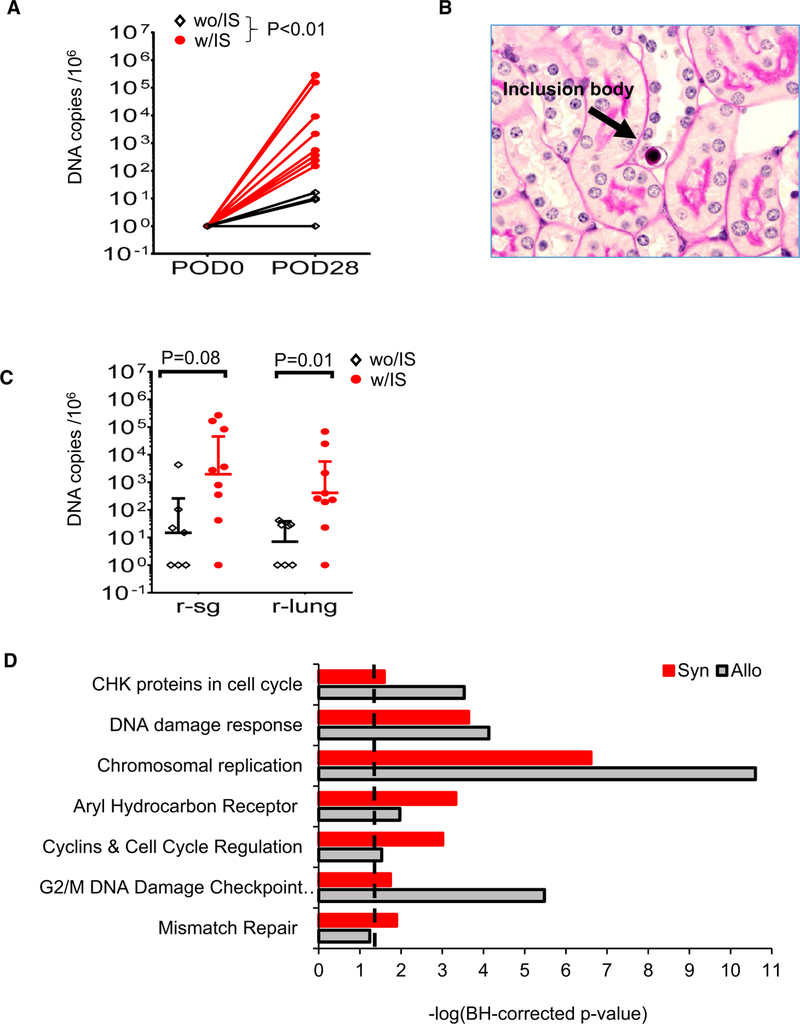FIGURE 8.
Transplant ischemia-reperfusion injury (IRI) is sufficient for induction of mouse cytomegalovirus (MCMV) reactivation and dissemination. BALB/c mice infected with Δm157 mcmv virus were treated with the same immunosuppression (IS) regimen (with IS [w/IS]) or PBS (without IS [wo/IS]) at 6 months after the infection. DNA copy numbers in kidney, salivary gland, and lung were determined at day 28 by real-time PCR. A, DNA abundance in postoperative day (POD)0 control kidney (con) and POD28 after syngeneic D+/R− kidney grafts treated w/IS or wo/ IS. B, Representative section (periodic acid–Schiff staining, ×600 magnification) of kidney graft w/IS showing an inclusion body (arrow). C, DNA abundance at day 28 posttransplant recipients’ salivary gland (r-sg) and lungs (r-lung). D, Transcriptome profiling and pathway analyses were performed on untreated D+/R− syngeneic kidney grafts (Syn) or allogeneic (Allo) kidney grafts at POD2 (n = 3/group) as described in Figure 4. Pathways with –log P value >1.3 (dashed line) are statistically significant

